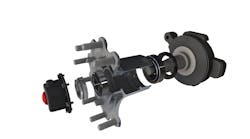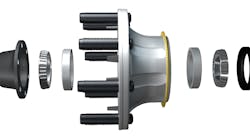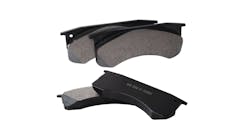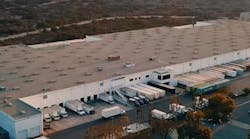In light of the recent weather events caused by Hurricanes Harvey and Irma, and severe weather in general involving flooding and storm surge, tractors and trailers exposed to water submersion require special consideration to the work procedures used in salvage and/or rebuild of the units.
If wheel ends are not properly repaired, wheel end performance may degrade, up to and including possible catastrophic wheel end failure.
Protect technicians and the environment
Before inspecting units that have been submerged in flood water, technicians should use caution to protect themselves from unknown chemical composition. Personal protective equipment should be worn for the face, hands and body while exposed to contaminated wheel ends.
Environmental precautions should also be followed. Consulting with local EPA officials regarding proper handling and disposal procedures will ensure all hazardous waste from affected wheel ends will be disposed of per EPA requirements.
Identify wheel end type and conditions
Once proper safety considerations are made, technicians should inspect the wheel end.
The technician should address the following questions:
· Is the wheel end lubricated with oil or grease?
For oil, drain the wheel end lubricant into an approved receptacle and inspect for water contamination. If no lubricant contamination is found, install the hub cap with a new gasket and refill to the proper level.
If the wheel end is lubricated with grease, follow the recommended annual inspection procedure for grease wheel ends. This involves removing the outer bearing and inspecting the hub cavity for proper lubricant level and condition. If no contaminants are present assure proper grease level and reassemble. If the lubricant is determined to be contaminated, a complete disassembly is required.
· Does the wheel end contain a pre-adjusted bearing package?
Some pre-adjusted wheel ends have limited rebuild capabilities. For this type of wheel end, contact the pre-adjusted wheel end manufacturer for rebuild instructions.
General steps
Once the type and condition of the wheel end have been identified, it’s necessary to inspect all wheel ends, not just a random sampling. The exterior of each wheel end should then be cleaned, washing off potential chemicals or other contamination. This cleaning should be done in a location with approved drainage and run-off collection capabilities. In all cases where lubricant is drained or removed from a wheel end, properly dispose of that lubricant. Disposal may differ depending on level and type of chemical contamination in the lubricant.
Water, especially salt water, is one of the most dangerous contaminants that can seep through the seals protecting wheel ends and affect the functionality of the bearings over the short- and long-term. To avoid wheel end failure, costly maintenance and potential safety risks on the road, it’s critically important to not put any unit into service until it has had a complete wheel end inspection or repair.
This information was provided by STEMCO
To access the complete STEMCO Tech Tip detailing how to identify wheel end type and conditions that may degrade lubricant and metal components, including STEMCO Sentinel hub caps and non-Sentinel hub caps, go to: Inspection, Rebuild, Reassembly of Submerged Tractor and Trailer Wheel Ends.



